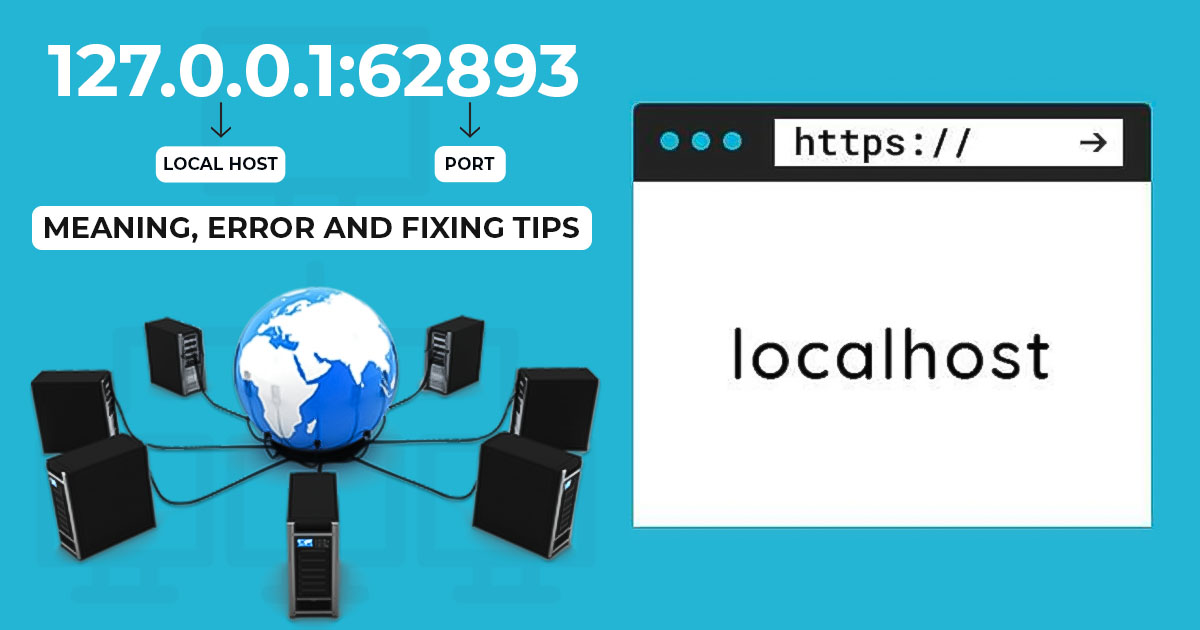Introduction to the Error Code 127.0.0.1:62893
Have you ever stumbled upon the mysterious error code 127.0.0.1:62893? If so, you’re not alone! This cryptic string of numbers and letters can throw a wrench in your online activities, leaving many users scratching their heads in confusion. Whether you’re trying to access a website or connect to an application, encountering this error can be frustrating. But fear not! In this post, we will unravel the meaning behind this elusive error code and provide practical solutions to help you get back on track. Let’s dive into the world of 127.0.0.1:62893 and discover what it all means!
Understanding the Meaning of the Error
The error code 127.0.0.1:62893 often raises confusion among users. This string represents an IP address, specifically the local host or loopback interface of a computer.
When you see this error, it typically indicates that your system is trying to connect to itself but encounters issues in doing so. The number “62893” usually refers to a specific port on which the local service is expected to run.
Understanding this means recognizing that something within your application or network configuration might be misconfigured or not running at all. Instead of reaching out successfully, your requests are hitting a snag.
This error can occur with various applications and server setups, making its context crucial for troubleshooting effectively. Each scenario may have unique quirks contributing to this disruption in communication with your own machine.
Common Causes of the Error
Several factors can trigger the 127.0.0.1:62893 error. One common cause is network configuration issues. If your firewall settings are too strict, they might block essential connections.
Another possibility lies in incorrect application configurations. Sometimes, software fails to connect properly due to mismatched settings or outdated information.
Malware infections can also create havoc on your system, leading to unexpected errors like this one. Keeping your antivirus updated can help mitigate such risks.
Additionally, corrupted files related to specific applications may contribute significantly to this issue. When these files become damaged, normal operations falter.
System resource limitations often exacerbate problems as well. Insufficient memory or CPU usage can hinder processes that rely on smooth connectivity and performance from local addresses like 127.0.0.1:62893.
How to Fix the 127.0.0.1:62893 Error
Fixing the 127.0.0.1:62893 error can be straightforward if you follow a few simple steps.
Start by checking your internet connection. Ensure that you’re connected and that no issues exist with your network settings.
Next, review any firewall or antivirus software running on your device. Sometimes these programs block local connections, leading to an error message.
If that doesn’t work, try restarting your computer or router. A fresh start can resolve temporary glitches in the system.
Additionally, check for updates to your operating system or application that are causing the issue. Keeping everything current reduces compatibility problems.
Consider flushing your DNS cache using Command Prompt (cmd). This clears outdated entries and may help restore proper connectivity to local host services tied to this port number.
Tips for Avoiding the Error in the Future
To steer clear of the 127.0.0.1:62893 error, proactive measures go a long way. Start by keeping your software updated. Regular updates often include bug fixes and enhancements that can minimize issues.
Next, ensure your firewall settings are appropriately configured. A misconfigured firewall can block necessary connections, leading to errors.
Additionally, make it a habit to regularly check for malware or unwanted programs on your system. These intrusions may interfere with network operations.
Consider backing up important data frequently as well. It won’t prevent the error directly but will safeguard your information in case of unexpected problems.
Familiarize yourself with any new applications you install. Understanding their requirements and settings helps maintain smooth operation and reduces chances of encountering this pesky error again.
Conclusion
Understanding the intricacies of error codes like 127.0.0.1:62893 is crucial for anyone navigating the complexities of network issues or software malfunctions. By grasping its meaning and recognizing common causes, you can effectively troubleshoot and resolve this problem.
Implementing the fixes discussed can lead to smoother operations in your systems, preventing similar errors from cropping up in future use. Proactive measures are key; regularly updating software, maintaining security protocols, and ensuring proper configuration will safeguard against potential disruptions.
With a bit of knowledge and maintenance, tackling these technical challenges becomes much more manageable. Embracing these practices not only enhances your experience but also empowers you to deal with any unexpected hurdles that may arise down the line.

















Got a Questions?
Find us on Socials or Contact us and we’ll get back to you as soon as possible.